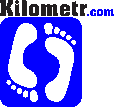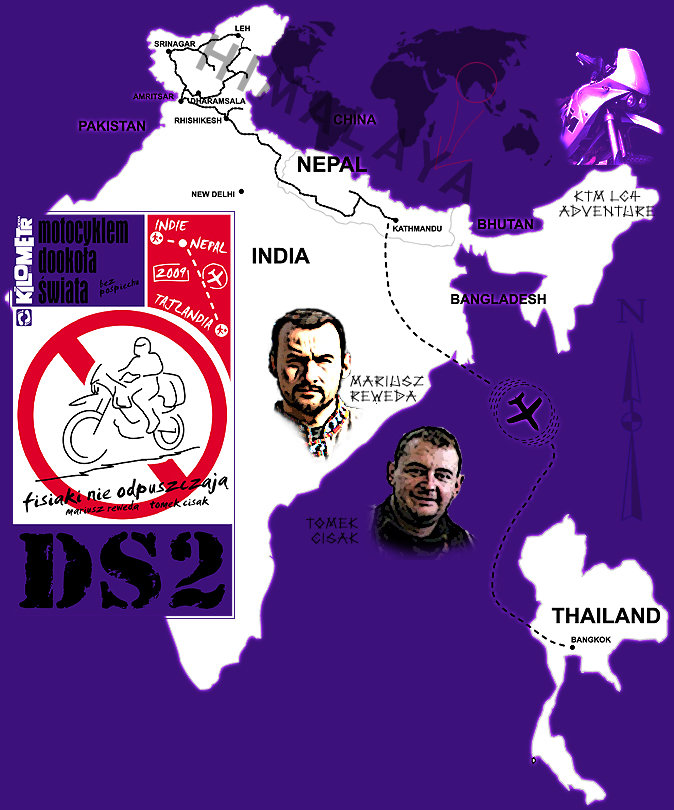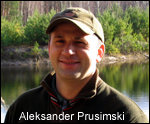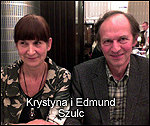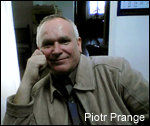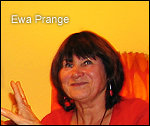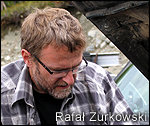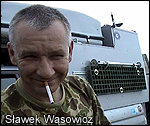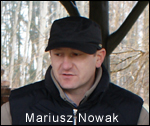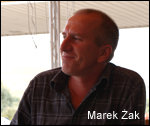Our plans changed completely. Some of you may remember that this year we intended to go to northern Pakistan, then to Afghanistan and China. But from our 2008 experience we have learned that visiting Pakistan at its current political situation is not easy. Permanent struggling for permits with the army, running away from police escorts, the most interesting areas being under the guerrillas' control… It is not free traveling. Of course, it is possible to cross Pakistan, but then it is for an achievement only, as we did it last year. Afghanistan is the same story. In fact, I would not mind going to Afghanistan to see the country "for the achievement only", but what next? We need to move east to the Indochinese Peninsula, and not to the west. Crossing China turned out to be a difficult subject to handle. It is difficult to plan a route in this country with high probability without a support of diplomacy elite. And this needs money, time and is hardly predictable. Therefore, together with Tomy we decided to travel further east. For Stage 2 we planned a detailed penetration of the Indian Himalayas and Nepal. Then we intended to move with our motorbikes to Thailand and to leave them there for some time until the beginning of Stage 3. Unfortunately, to travel overland to Indochina, one needs to cross China or Birma (Myanmar). Officially neither of those two countries allows motorized travellers on their territory. Unofficially it is possible but costly. It is less expensive to fly with motorcycles above these countries. To cut the long story short - the world is completely divided with wire entanglements of political absurd.
This stage was planned to be completely different than the previous one. Only 6,000 km and 40 days of travelling. Last year it took us the same time to cover 14,000 km. There is an old saying that if you want to make God laugh, make a plan! We are just toys in the hands of the Destiny, and not every trip is great. This trip was the least successful among all others which I had undertaken. I had serious problems with my motorcycle, which practically started on the first day of the trip. We lost 10 days since I had to wait for the delivery of a spare part from Europe. We were stuck in Amritsar. Finally, my bike hardly got to Nepal and it broke down completely. Now it is in Mahandranagar, near the Indian border, waiting for the next Stage. From there I started with Tomek on his motorcycle, and then continued by public transport. Tomek managed to get to Bangkok on his motorcycle, where he left it until the next Stage.
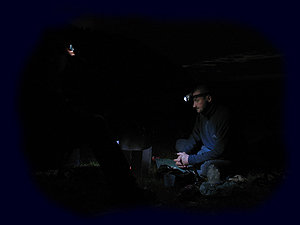
The detailed itinerary was as follows: on 15th August we went via Helsinki to Amritsar in India. There we fitted our bikes to a long trip condition, which means we changed oil in engines, regulated all valves, replaced gear racks and chains with different ones, etc. After 12 days of waiting for the delivery of the spare part for my motorcycle and after fixing it, we finally went to Dharamsala, i.e. McLeod Ganj, which is the seat of Tibetan refugees. It is a particular place - like a "small Tibet" and at the same time the destination of Buddhist tourism. Then, at all times in a hurry to make up for the lost time, we moved north to Mandi and Leh across Keylong. It is the highest public road in the world. We crossed Baralacha (4,890m) and Lachalung (5,065m) Passes. In 2003 I came here for the first time in my Toyota LC. Due to the problems with our motorcycles we did not have time to explore the areas of Manikaran, Spiti, Lahaul and the Morari Lake. Finally we reached Leh located below the Tanglang Pass (5320m). Then we took the main road to Nepal and crossed the border in Bonbasa. We travelled along the lower parts of Nepal as far as Pokhara, then Katmandu. From the capital we took a plane to Bangkok, Thailand. We were back to Poland on 25th September 2009.
Despite many failures and critical situations, this trip contributed a lot to my travels. It has been already heavily imprinted in my memory. Definitely, in the future I will plan another expedition just to the Indian Himalayas, and definitely I would like to spend more time in Leh. Now I also have my opinion about Nepal. It had never turned out to be on the way before. Finally I went there and do not really intend to go back. The brief stay in Thailand prepared me mentally for the next stage of the round-the-world trip, which will mainly comprise exploration of Indochina. It was yet another time that the rule was confirmed - airplanes are the enemy of true travellers! Because of the air-bridge over Birma, my trip shall be missing a crucial element connecting the culture of Indian subcontinent with Indochina. For centuries those two worlds were strongly connected by trade and culture. Nowadays Birma is not accessible for motorized travellers, and overland crossing of China is extremely expensive (border charges). This created such an extraordinary situation in our round-the-world trip. We had to jump over these two countries aboard a plane. And because of such a gap it is much more difficult to understand the country where the plane lands. Different world cultures connect and merge. It is particularly visible in places where globalization is not so strong as in Europe. If one travels selectively, hopping with a plane all over the globe, then it is difficult to make a whole out of impressions from various nations, peoples, cultures. This trip reminded me that. I plan to explore China and Birma by bicycle, it is the only possible way to do it.
As before, also during this trip, a book was written. Some fragments will soon be placed underneath. It will be possible to buy it via mail. The cost is PLN 20 + postal fee. The form is a bound xerox copy. It is also possible to order a DVD presentation with pictures and short films from the trip, garnished with my comments and local music; price: PLN 10.
saluto
mariusz
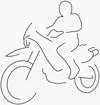
opis mojego motocykla
first stage
|
|
info which I send during the way:
2009.VIII.21
As you probably know, we have started the second part of our round-the-world trip on motorbikes. We collected our bikes from a friend who kept them for 9 months. They were in a perfect condition. Despite the fact that they are KTMs - they started at the third kick. We inflated the tyres and went to a hotel in Amritsar. It was late night already so we postponed other works for the next day.
We did the tuning, oil replacement, changed filters, change the front mudguard in Tomek's motorcycle, set valves, etc. At the moment it is the rain season in India, so we had to work under roof. The hotel owner allowed us to use the garage. Any work with this make of motorcycles always stirs up one's temper - and every now and then one of us had to swear badly. The guys who designed those engines must get such a dose of bad energy from the engine users every day - that they should be dead by now! For us the additional difficulty was the tropical climate. Even if one stays in a shade laying on grass, sweat is so great that it floods into eyes and lips. We hurried with our work to make sure that we can finish all in one day. It was like working in a sauna. And at the end it turned out that my motorcycle does not want to start, and in Tomek's bike the valves produce clattering noises after regulation. It got dark and we had to stop as we could not work any more. We went to town to have our "breakfast-lunch-dinner" meal as we had not eaten that day, did not drink much, and had a great loss of physiological salt sweated out of our body. Next day, after many trials and tests it turned out that the ignition module was dead in my motorbike. It is like an electronic box. I have always repeated that any vehicle with electronic elements is not suitable for trips far from home - and just at this time I got a confirmation of my words. Obviously, we did not have a spare module - apparently they never break down, these Japanese inventions installed by the Austrians. We even met two Austrians at a restaurant in the evening, and wanted to give them a beating as their country produces such crappy stuff.
There was nothing we could do. Time was flying and we were stuck in a relatively uninteresting place in India. We sought help with our friends in Germany and on the same day Markus shipped the missing module from his KTM to us by DHL. We could only wait. Days seemed too long, due to the steamy weather, like in a sauna. Only if it rained, the air got fresher for a while. I know Amritsar like the back of my hand, for years I had to make a stop-over here. Last year I visited this city three times, not out of my own will. But for a careful observer there is always something interesting to describe. So I loiter along the streets and my pen seems to keep scribbling things by itself.
Yesterday we felt fed up with the Indian food. No, we did not get food poisoning yet, but the local food is heavy and greasy, so after each meal I feel as if I had a rock in my stomach. We decided to cook our own "travel soup" and eat boiled eggs. Tomek still has some genuine salami from the Czech Republic, so we have to finish it as well, otherwise it will go bad due to humidity.
Today, from the morning we had to struggle with the Indian branch of DHL. A lady from Delhi phoned with a message that my parcel is at the customs office and I have to sign an authorisation for them to carry out the customs clearance. She sent a file with the document but in a zipped format, impossible to open in just any internet café. We had to look for a special place to print it. Then we went to DHL office in Amritsar to fax it to Delhi. Initially they refused, then agreed and tried, finally said the number was incorrect. The number was ok, but the line was busy. We went to town again to look for a scanner. Finally we find one, so I could send the signed letter by e-mail. But it was already too late because the lady (whose name is Laxmi Lamba) went home already. Hopefully she will work tomorrow. I would not mind filing a letter with my opinion about the work standards of DHL offices in India. I would chew out their asses, no hesitation. The parcel was due tomorrow and now it will probably arrive on Monday or later. And I will probably have to pay customs. It is India here, one has to fight for everything. It took me one hour to find a screw to fix my GPS in various workshops, here they fix everything with strings and wires. It also took us time to find fuel filters. We could not bring oil from Poland as it is not allowed to transport it by plane. We tried to buy oil on the spot. The best oil for motorcycles is mineral oil. Here we only managed to buy synthetic oil for cars. Its reference number seems to be similar to what we need, but we cannot be sure if the engines do not get seized up, and maybe the gear box will work a bit harder.
For the guys from the hotel we are like an El Dorado - they got almost new DID chains and old gear racks. We replaced them with new ones. Now we have completely new transmission ratio, since here it is impossible to ride faster than 80 km/h, and when we get to the Himalayas we will need low first gear as there is not enough oxygen there. We want to drive up to the altitude over 5,600 m above sea level. Tomek says that we will have bleeding from the nose if we get that high without acclimation. Our hosts also hid somewhere our old oil and filters, probably they will make something out of them. And when we let them the chains, they almost fought for them.
Well, it is a good fun after all, but we do not dance because it is hot like hell. After a few days our bodies got a bit accustomed to it, but I have always preferred Norway to Croatia, which means cold weather is my preferred temperature and I am dying here. Only few tourists around, nobody to talk to. And nobody believes that we arrived here on our motorbikes.
That is all for now.
2009.VIII.28
Finally we left Amritsar, after 12 days of being stuck in this sweltering and not so interesting city. The parcel with the spare part arrived this morning. I had to pay 1 USD of customs duty and 150 USD of penalty for importing a second-hand electronic module to India, that is an ignition unit for my KTM.
We left the city around the noon. We had ca. 200 km to get to McLeod Ganj - it is a small town above Dharamsala. It is the centre of Tibetan emigrants. For the first 120 km it felt like riding in a sauna - it was so hot that I almost felt faint. The maximum speed on roads in India is 70-80 km/h. And on the winding roads in the mountains we could not go faster than 50 km/h. We replaced the gear racks in our motorbikes and they proved to be very good; I could even ride on the fifth gear.
On the way, we had to cross a river. The bridge was washed away now - and in November 2008 it was still fine as I travelled on this road and on the bridge then. The water in the river was up to our knees. The river was quite wide, and the water was sludge-like, both with respect to its chemical composition, as well as its colour and temperature. We had to push each motorcycle together, one by one, because the river bed was all covered with large stones. So - the motorbike was on the first gear, one of us was pushing it, and the other had to assure that everything went fine. I suggested to Tomek to make a show and cross the river in the Paris-Dakar style, full speed! But as it often happens in such situations, we did not have enough courage, or maybe recklessness to do so… So we enjoyed our stroll across this 200-meter wide rive four times. Two times with our motorcycles, and two times with our trousers, jackets and helmets.
Traffic on Indian roads…. Everybody can imagine that. If you put six-year old kids behind the steering wheels of cars or steering bars of mopeds and let them move on the public roads - that is exactly how it feels to drive on Indian roads. Social status, profession, education, age - nothing matters. Everybody drives in such a way as if their thinking about the future could reach only half a second ahead. I do not have to tell you that it is quite tiresome for people accustomed to the western-style traffic. By now I know it well, from my previous trips, from Pakistan and from India. We know a guy from Dheli, who visits Poland occasionally. When he does, he moves around in a rented car - he says that driving in Warsaw at the peak hour is so boring that he falls asleep. He used to say that "in India when you drive, you use your imagination".
Yesterday, we met a French guy riding Enfield bike, who stayed in our hotel in Amritsar. It costs 150 EUR per month to rent such a "machine" (350 cc). He rode the highest public road in the world, covered the distance of 6000 km and nothing broke down. Enfield riding in the Himalayas has been popular among tourists for 20 years.
We arrived at McLeod Ganj just before dusk. The stalls and shops were just closing. We had dinner in a restaurant, changed some money and bought a bottle of whiskey. We have to celebrate that my motorbike finally works fine again. Because of the unexpected stay in Amritsar our time has shrunk. Tomorrow early morning we will move towards Manali, and then to Keylong. We have only 8 days to make the Himalaya loop, which means that we will have to hurry, like we did last year. On 4th September we have to be back in Amritsar to change the tyres. We plan to be on the India-Nepal border on 7th September. Our motorbikes stayed in India too long - we exceeded the allowed time by 3 months and we might have trouble on the border when leaving the country. So we expect that it may take us two days to cross the border. Then it will take us 4 days to get to Kathmandu, where we will have to spend at least 5 days to arrange shipment of our motorcycles to Bangkok. Maybe we will have time to go to Jiri, at the starting point of the track leading to MtEverest. In Thailand we will have to travel for 700 km north to the place where we can leave our motorbikes. And on 25 Sept. we have our flight back to Berlin. Time flies fast! Let's hope our jalopy bikes will work without any surprises!
I am not going to write about McLeod Ganj, as I have done it many times already. It is one of the most touristy places in India, but do not confuse that with Taj Mahal. I mean true tourism, not just "all-inclusive pleasure trips". Here, one can sense the taste of "white India", meet oldish hippies, junkies, tourists, travellers. No way to get bored. And not the genuine India, but India which is most popular with the white.
Well, that is all for now. The trip has finally started. Unfortunately, we have to hurry to to make up for the lost time.
2009.IX.1
Three days have gone by and we arrived to Leh in Ladakh. It is the northern part of the Himalayas, close to the border with Pakistan. We left Dharamsala on Saturday early morning, it was still dark. India at dawn when it is still cool, incense nicely smells, people are still slowly-moving, there is no much noise, no much traffic, children in their school uniforms wait at the bus stops, birds sing loudly, women leave temples, shop keepers open their 'hole in the wall'retail outlets, everybody still smiles and kind to each other. That is the best time in India. We headed towards Mandi, along the main road across the mountains. It was surrounded with clay and gravel hills, the footsteps of the Himalayas. Here one can find many traces of the colonial India, bridges, military bases, few palaces.
Before Mandi we had breakfast in a restaurant. But before that I had a small problem with my engine, it started to choke, and it turned out that the Indian fuel filter cannot manage, so I threw it away. Originally, KTMs do not have fuel filter. As far as defects are concerned, that day Tomek had two more. The break conduit worn through because Touratech did not add tuning putty to fix do the conduit. Then the front gear rack got unfixed and the engine oil started leaking, but we fixed it and it is ok. From Mandi we went along the Parbati Valley. The beautiful Himalayas started. Unfortunately, the traffic on the road got dense. We passed hundreds of Indian motorbikers. We have heard that they were trying to beat the Guiness record, they wanted to ride the highest road on the globe to Leh in the largest group of motorcycles. We saw around a hundred of them. We also met more than dozen bikers from Australia, they rented Enfields in Delhi and cars to transport their luggage, and obviously they were heading to Leh. But the point is that they were all retired! Great people! In this way we found a place to stay when we go to Tasmania, it will be good in 2011. We passed by a few other tourists riding Enfields and travelers on bicycles.
In Manali we did the shoping for two day in the Himalayas, we tanked fuel to all possible containers because later on there is only one fuel station, and we found a place to camp in a spruce forest at 2600 m above sea level, just before the Rothang Pass. Slowly I recognized the road from my previous journey here. Almost nothing has changed.
The spruce forest and my 'bed' in a tent were my asylum. It was truly pleasant, although I had to run three times to the bush-toilet due to stomach problems.
Next day we started as usually at dawn. We joined the convoy of trucks following something which used to be a road leading to the Rothang Pass (3980 m). I remember that 6 years ago there was almost no traffic here, and the pavement was reasonably good. Now the KTM suspension system had to prove what it was worth. It took us two hours to travel 40 km to get to the pass. The mountains on the southern side of the pass are beautiful. 100 m high waterfalls, snow-covered peaks at the altitude of 6000 m. But the air was still sweltering and it was quite warm. When we reached the pass, the clutch control in Tomek;s KTM died. So we had to deaerate the system and then went further. At that time we did not feel the altitude, we were just slightly out of breath.
The northern part of the pass is another story. Gravel mounds, few solid rocks, mild mountain slopes. That is a standard landscape of the Himalayas. AND THE SPACE! It is difficult to get used to the distance. It seems that the other side of the valley is close, and the abyss under them - small. But when you look carefully on the mountain slope and notice a car or a cow, than it turns out that the distances should be counted in dozens of kilometers. The clarity of the air does not help to estimate the distance. I would compare this landscape to the muscles of a body-builder, who focuses on the size, and not the shape. Here the beauty is in the magnitude, not in detail.
We traveled for 50 km in dust of the road to Keylong. There we tanked the last available fuel. It turned out that our KTM used 80% more fuel than usual due to the low oxygen level and the fact that we had to ride on the first and second gears, on a potholed road. The roads are not too steep, otherwise the trucks would not have managed on them.
When we passed Keylong, the road got a bit better, and the traffic was less. Sometimes we managed to ride on the fourth gear. But again Tomek had a problem - a rubber pipe from the radiator fell off and all the liquid leaked out. It happened twice, we do not know why. Then we crossed the Baralacha Pass (ca. 4890 m). It got a bit cold but we made a stop. The landscape changed, screes, taluses, colossal mountains.
We passed more and more Indians riding Enfields, we got tired of greeting everybody. We passed by all tent roadbars and minihotels for tourists, and went to Gata Lopps, which lead to the Makhli Pass (4500 m). There we found a small meadow where we set our camp. The MSR cooker could not manage with the altitude, but Primus burner helped us to prepare the soup at 4300 m.
It got quite cold and dark quickly, but - it goes without saying - I had my shower! The first time at such altitude! I tried to hide behind a rock but was windy anyway. We could not sleep at night, because of the altitude - headaches and diarrhea. It started to rain and it did not stop until the following evening. But we had to go further, though we did not feel like to at all! If anybody came to me then saying they envied me, then I would give them a good beating!
When we got to the Makhli Pass, it started to snow. We put on all clothes we had and out rain overalls. And then I noticed a weird thing - two Englishmen were approaching us riding Enfields. One of them wore sandals and jeans, a jumper and an earflap cap. He was all covered with snow but continued to ride. We had plenty of 'equipment' and our feet and hands were freezing off! We crosses the Lachalung Pass (5056 m) in snow, we could not stop for long.
Of course we also met cyclists with all their luggage. These are tough guys! I felt lousily without acclimatization, any effort made me breathless.
After the Lachalung the landscape improved, great canyons, colourful gravel heaps. Finally we found ourselves on a sandy plateau at 4700 m. We could drive fast, but in dust. A few stops further we reached the seond highest pass in the world - Tanglala (5360 m). But the weather conditions were horrid, the camera was all covered with snow, the wind was chilly like hell. But the cyclists continued… It was a relief to get down to 4000 m to have finally our breakfast under roof of a deserted military building. Then we had more than dozen kilometers to the Indus valley. There, we met two Poles riding Africas, and one Italian on a Transalp. He got a puncture so we helped him and went to Leh to get fuel. The Polish people have been for 4 months on the road, across Armenia, Georgia, Iran, Turkmenistan, Uzbekistan, Kyrgyzstan, China, Nepal and India. Their plans include Sikkim and Butan. The price for a permit to riding their own bikes in China was 5500 EUR for 22 days for 2 motorcycles. In Iran they met the bikers sponsored by the Polish Radio '3.
In Leh we many white-faced travelers with whom we spent an enjoyable evening though we were dying of headache and other ailments. This morning we saw the procession on the occasion of the end of the summer, always on the 1st September in Leh. What a beautiful celebration! I did not expect that this area is so interesting due to its separate culture, large number of buddist temples, interesting people and beautiful mountains. We did not go to the highest pass - Khardong (5606m) since it takes a whole day to get the permit, and in four days we have to be in Amritsar. It is all because of the time we wasted waiting for the parcel in Amritsar initially. We lost what might have been the best part of the trip. This morning this thought strongly discouraged me to further traveling and catching up with our schedule.
That is all for now. In a minute we will set on the road going west, to Kargil and Shrinagar. And yesterday I had to regulate the valves in my KTM because after getting down to 3500 m they went crazy, I do not know why they got so much clearance.
2009.IX.4
So we are back to Amritsar, to change the tires which we brought from Poland and left them here at the hotel. We are back to the lowlands, the air is thicker, more oxygen. I can resume my everyday practice of push-ups and a small drink in the evening.
We left Leh just after I sent the previous e-mail from the internet café where the internet connection worked as a flail in the hands of a big-city-man! We did not go very far, only 10 km and then by accident we noticed that the oil from my engine was leaking. It turned out that when I was struggling with the valves the previous day, I did not tight one screw from the valve cover properly. So in the middle of this desert - as the landscape around us truly resembled a desert located at the altitude of 3500 m above sea level, only on both sides limited with snow-covered peaks - I had to unscrew everything again to tighten this one bolt.
Then we went along the beautiful Indus valley. At the beginning we had views on the magnificent canyons filled with the turquoise water from the glaciers. Great pavement on the road, almost new - so I tested the enduro tires for their traction. We met yet more Enfield riders from India, as well as cyclists. When the fertile part of the Indus valley began, it was not so interesting anymore. Indus flows to Pakistan, and we went along the old way of thousand hairpin roads up the hill to the pass of 4180 m. The Troll Way or the Eagles Road or any other example of "hairpin-road-ology" would not impress me after what I have seen here. One of my friends went to Corsica first and then visited the Polish mountains of Bieszczady, and concluded that in Poland there are no good mountains to see. It may be the same for me when I come back from the Himalayas. Hopefully not. I have seen the Tien Shan range, which in my opinion is more beautiful than the Indian Himalayas, and nevertheless I can still find enjoyable places in Europe and in Poland.
We left Leh around noon so before we could travel any reasonable distance it was already dark. So we had to 'struggle"- there was no more bitumen, only dust and potholes as large as Hitler's shell craters, until it was late night. We arrived to Muhlbek and there we found accommodation in the governmental hotel. Over there, they have a bas-relief of a modern Budda (I forgot the name) dated from the 8Th century. It was already night time when we went to the restaurant to have a bread omelette. The quiet atmosphere of the village, people different than in town, different culture of the Buddhists - it was a great relaxation after this day full of sensations and events.
Next day we went further. Again, trying to catch up with the lost time. At the beginning the landscape reminded me a part of the Amellago Canyon in the High Atlas Mountains in Morocco, between Amellago and At Hani. Even the households were similar, but people were different. Then there was Kargil and the Muslim part of the Himalayas. The fighting Kargil. That is how I call this variety of Islam. 10 years ago the Pakistanis made here a small military sortie from the glacier and they showered missiles along the road to annoy the Hindu people.
We entered the valley of the Drass River, and when we passed the town of the same name the surroundings became as beautiful as in Norway. I have been planning to re-visit my favourite country in the world and I have not made it yet, and here it was like Norway! The mountains are lower, so they are greener, rocky, with snow covered peaks, humid air, waterfalls and a good paved road again. Then the army closed the road because they had a convoy of ammunition, so we bumped into a traffic jam of 100-200 trucks stuck on the hairpin road with an abyss on one side. We went along the sideway, not caring much about the soldiers' instructions. Further it was not so picturesque any more. We went down to Kashmir and the Islamic villages. In 7th century Islam was a modern religion. Nowadays it keeps its followers, particularly the fundamentalists, in mental, social, cultural and civilizational backwardness. The spiritual leaders do that to have better control over those ignorant people. It is heart breaking to look at the faces of the local people. Hopeless morons! Maybe the contrast to the Buddhists Ladak make it so difficult for me to digest it, particularly when we made stops and instantly we were surrounded with hundreds of people making a tight crowd around us, and all those dull eyes following every move we made, as if we were making a special ceremony or a ritual, and not just drinking coca-cola. Maybe because of that, or maybe because of some other reason, I forgot to look for a place for the night before a huge city of Srinagar, which was close. Of course, we drove into this shit, but thanks to GPS points from satellite pictures we managed to get out from this sweltering traffic hell. It is impossible to imagine it if you do not see it with your own eyes. We did not find any hotel suitable to shelter us and our motorcycles, so we went at night along a crowded Indian road. That was another hell, fighting with dippers / lights; I almost hit a tree which was growing partly on the asphalt road, God knows why. I had to give way to a truck which was overtaking other truck, and I got smashed with a tree branch on my helmet. Then it was a miracle - we found a meadow in the forest without people. As here people are everywhere. I rode there blindly and got a bit stuck in the mud, but I accelerated and this time my helmet was splashed with mud. But a bit further it was dry so we could put up our tents and make a camp for the night.
The next day was in rain, at least it was not too hot, otherwise we would not stand the heat in our plastic rain uniforms. We saw a bit of the beautiful Kashmir, but the main road was so crowded that the struggle for survival took all my attention. Only when we took a short-cut to Pathankot it got a bit better. But then something else went wrong. In my shitty bike i.e. KTM the valves went wrong again, and in Tomek's shitty bike i.e. KTM the oil disappeared (but not leaked out). I am afraid that the engines are just about to draw their terminal breath and we will have to solve a new problem. Sometimes I feel like little Dorothy who is permanently observed by a witch in a glass ball. And whenever she can, she makes our lives complicated. When we are in the mountains and cannot be grilled with the sun, then it rains like hell; when we are on the lowland, the temperature is horrendous, and for fun - she just fucks up our engines, which are almost new engines!
But I have to keep up my spirit, although in the evening in Pathankot I had a moment of breakdown. Anyway, the engine seal had to help for a while.
We found a beautiful deserted house in the forest, completely by accident when we went in the bush to take a piss. But we were so stupid and did not stop there but went further, and again at night we rode into a large city. At least Tomek could watch US Open on TV at the hotel.
Next day, in full heat, we reached Amritsar, rode straight to the hotel which we already knew so well. We were received there like good old friends. We changed the tires, which was not easy as the local helpers treated then as tractor tires, not motorcycle ones!
I keep thinking what we should do with those bikes. Maybe we should bring them back to Poland and sell, then buy something better. But there is nothing better, all other models are heavier. I have already a plan in my head with Big DR, but… Finally we concluded that next year for stage 3 I will bring a new head for my engine, and Tomek …. will probably have to bring a complete engine! (or maybe just the rings will do). Wishful thinking…
Tomorrow we will head towards Nepal. Let's hope the valves will not get loose again, and the oil in Tomek's KTM will not disappear.
2009.IX.10
We left Amritsar a few days ago. We went along the main road to Delhi, but in Ambala we took the shortcut to the western border of Nepal. The main road was ok, mostly two lanes and not too crowded. On the first day we made 450 km, thanks to the quality of this motorway-standard road (210 km). Unfortunately, we had two days of hot weather without the monsoon rain. It felt like in a sauna again. Many times I was wandering what I was doing there. At each stop, which had to be every hour, I was looking for some shade and I had two cold cokes or pepsi in one go! I felt dizzy from the heat and sweltering weather. The humidity was 81% and the sun was beating down like hell.
The road became more interesting only when we got to the shortcut road. There were not so many trucks anymore, but our GPS points from the satellite pictures also finished, as initially we did not plan to take this shortcut to Nepal. Unfortunately, we were running out of time. We had to look for the road and ask all people we met. Of course, like in Poland, everybody would give us directions to the main roads, but finally we managed to travel across genuine Indian countryside areas, which are mostly Muslim here.
The paved road finished, and was replaced with mud with occasional dust. I had my jacket unzipped so everywhere where dust penetrated and mixed with sweat I was all covered in mud! My skin cannot stand such temperatures in a motorcycle jacket on, and I did not want to go half-naked as the Hindu people do as somewhere in my head there was always this fear of an accident. My whole uniform was again all soaked with sweat and finally I had heat rash all over my body. Next year we are not going to travel across high mountains so this time I will take the uniform back to Poland, and I will take back for stage 3 only light protection "armour", light jacket and light trousers with protections.
We enjoyed the countryside a lot. Maybe it was dirty and smelly from the waste decomposing in the sun, but it was completely different to what we saw in Kashmir or in Laddakh. Now it is the Ramadan time, so the Muslim villages are very busy in the evenings, although shops are closed. All day it is not allowed to eat, and only in the afternoon the fiesta begins!
We almost missed the moment when we crossed the Yamuna river, it was quite dark alraedy. Then we took another shortcut and then I found a hardly used path leading into sugarcane filed. We put up our tents on a small clearing, we could hear the noises from the road and from the nearby village, but we did not have any unexpected visitors. All night long the muezzin called from the minaret, and then they played some recordings, probably some religious scriptures, although it did not sound like chanted fragments of the Koran. Again the night was hot, and just after taking showers we retired to our tents. Sleeping bags were nor necessary. The morning was the best time - cool, fresh and wet with dew. We were woken up by birds running on the ploughed field. We were on the road before the sunrise. We had to find the place to cross the Ganga River. At this point it is already 1 km wide. The maps did not correspond to the reality so we rode there and back through villages "forgotten by God and the [communist] Party", where all sleepy eyes stared at us as into a holy picture.
It rarely happens here that any of the locals would leave the village to move further than to the next village, so no wonder that two tourists on such monstrous machines as ours were an unusual phenomenon. All those who overslept that morning lost their one-in-the-lifetime opportunity to see such a thing!
It was difficult to establish contact with the locals. Language barrier was one thing, but also on mental level the situation was hopeless. We were looking for those who had at least one pen stuck up in the breast pocket of a relatively clean jacket. They were the ones who could show us the way. Despite the appearances, the people who live here are educated, there are physicians, vets, economists. Sometimes we even happened to be on the territory belonging to a local landlord. Just before the huge dam on the Ganga River we went by a construction site where a school was built. We used the shade and concrete floor to regulate valves in my KTM and fix a few bolts in Tom's KTM. Then we struggled traveling shortcuts to get to the border with Nepal. We crossed two rivers without bridges and had a meeting with local milk-cheaters. They would mix water and milk half by half, and then added some powder to it. And then a tourist buys a lassi in a restaurant and is surprised that it ends up with a stomach problem. No wonder, if the water was taken from a waterhole on a rice filed.
The most important item on that day's agenda - i.e. the Indian border - was just ahead of us. This crossing point is used by many Indian and Nepali people. They do not need passports, they go to work and to do shopping. We spend the first hour at the passport control office - which means at a creaky old wooden desk placed on a veranda of a clay building. Then the customs people came. We specially booked two days for them, because we expected problems with the border crossing due to prolonged time of keeping our motorbikes on the territory of India. But we were done in two hours! They had a bigger problem with us, than we had with them! They did not know what to do. Probably it is not very often that they would receive such two smooth operators from Poland like us. Anyway, at this Banbasa-Mahendranagar border crossing point there are only 30-50 tourist vehicles during the whole year, and it is very few. We checked that in the guest book. Because here they register everybody in dusty books, although they have computers but they are just idle, put against the wall. And the customs building is a thatched clay-and-cane hut.
We just told them our "story" about broken motorcycles and financial problems, and they noted everything in hindi next to the entry regarding our Carnets de Passage. From the last year we have unpleasant experience with Indian bureaucrats, who are top bureaucrats in the world, and I was afraid that we will be given a fine or our motorcycles may be arrested. As usual, Tomek played a "daredevil" and insisted they could do nothing, but I had my own opinion about that.
The passport control on the Nepalese side was a nice meeting with an officer who truly appreciated tourists visiting his country, and the registration of our CDPs in the customs office - which looked like a guard house - took five minutes total. In fact, they asked us to write our data in the books ourselves. Then we had 7 km to go to Mahendranagar (a small border town) where we rented a room in a hotel.
The following day was the terminal one for my bike. Out of not identified reason - maybe because of the wrong oil (for cars, not bikes), or because it is made of this shitluminium - the cam follower broke dawn and the sucking valves closed. I think the true reason is in between these two. I could not ride anymore. The engine was dead. The bike was due to spend the winter in Bangkok, far away from this place, but there was at least 850 km left to ride. So I had to leave my motorcycle for the next 15 months in the hotel in Mahendranagar. The owner of the place turned out to be a decent chap. The fee is 13 USD per month. When I get back to Poland I have to buy a second-hand engine, and then dismantle it and put together again a few times. When I get very fluent with it - like the NASA astronauts who practice all emergency situation still on the earth - I will get spare parts, will fly to Mahendranagar in December 2010 and will fix the total engine in one hour.
Next day we went with Tomek on one bike. I was without my helmet and in sandals, as I left everything else at the hotel to have it there for the next year.
We made a stop at the Bardia National Park. Tomek wanted to ride an elephant, and it was a good opportunity to observe Nepalese countryside. It is not as overcrowded as in India, the roads are empty, people do not have to fight for their space on the earth or for survival. It is clean and it does not stink. Although here they are Hindu, Nepal is currently at the stage of development when the social transformations start. The tight cast system is falling to pieces. Neo-maoists are getting closer to power. All over the place one can see the symbols of crossed sickle and hammer, and red starts. I was also surprised with the number of shops with alcohol. And people are friendly and kind here. They are completely different than in India. They are more introvert and tranquil, maybe slightly excessively servile towards strangers. A complete contradiction to Indians. All tourists keep saying - go to Nepal, then you will have a rest from India. I would say - to rest from India, one should be back home. Nepal is simply a completely different story. Even people's faces are more of the Birma race than Aryan-Persian race.
Next day we traveled 300 km to Bhutwal. After that I had enough of traveling together on one bike. My spine and my buttocks were dead. But the road itself was ok. Sometimes we went for 20 km and did not see a single vehicle. In all neighbouring countries it would have been a miracle! But when we got closer to the city of Bhutwal it got more crowded. And it turned out that if many Nepalis are cramped on a small area, then they transform into Hindus. Filth, noise and stench. But for me it was more friendly anyway. Maybe it was not like Varanasi, but I felt at home.
The following day - which is today - I went by bus 158 km from Pokhara. Tomek arrived on the motorbike. The route was a bit boring. Mostly clay mountains, that is how I would call them. But in some places the landscape was rocky and picturesque. I was thinking a lot and came to a conclusion that these mountains are like Nepalese women. Immaculate beauty, but somehow too "sugary", and somehow vague. One flaw is enough to spoil the whole keg of honey. But they do attract and stimulate… But later it is difficult to remember them as they are so nondescript.
2009.IX.20
It is the last part of the report from our motorcycle trip. From Pokhara we went to Kathmandu. I went by bus and Tomek rode his bike. The route was neither as interesting nor as pleasant as the one from Buthwal to Pokhara. It leads all the way along quite a crowded road, among green hills which are similar to the Polish Bieszczady mountains, but less inspiring. The final part is the ascend to a pass of 1700 m above sea level, and on its other side there is the Kathmandu Valley at 1600 m. On the way we got stuck in a traffic jam, because farmers went on strike. It was impossible to figure out what was that about. They only allowed the ambulance and a UN vehicle to drive through. They placed several wickerwork baskets and stones across the road, and the traffic jam was several kilometres long. But the Nepalese drivers are not as reckless as the Hindu people, and they did not block the road by jumping the queue if only possible. They all waited patiently in the line. After one hour we could move again. We reached Kathmandu well after dusk. Tomek found a hotel with a car park at Thamel, a touristy ghetto of Kathmandu. But I could not find it having the name only, it took me over an hour to join him. On that occasion I visited all Thamel which is possible to be seen in 15 minutes. In front of our hotel there was also a bushtaxi from Switzerland. They were the first travellers we met who had come here "on their own wheels". But they went trekking so we could not meet them at the hotel. And after 3 days their car suddenly disappeared.
On the first day I was not very impressed with Kathmandu. But the next morning it was much better. We did the sight seeing in Thamel and the surroundings of the old town. Kathmandu is as overcrowded as any Indian city, so walking there is like fighting for space with people, mopeds, cars, rickshaws and bicycles. Nothing is quiet here except for the brick walls of houses. At noon it is hot like hell, there are no more rains. So we planned mornings and evenings for exploring the town. We abandoned any idea of going for a trekking, because to see anything of the Himalayas one needs to travel one day by car and then hike all day to see any landscape that is more interesting. I am sure that the mountainous areas of Nepal are completely different to what we saw on the way and in the cities. But when I think of doing a trekking in Nepal, the first though which crosses my mind is an obligatory lungs' x-ray. It may be necessary to learn about the whole Nepal, it seems to be good for you and interesting, but I completely uninspiring for me. I'd rather go hiking in Tuva, Tien Shan and any other place, but not Nepal. To be honest, I do not even know why. Simply this country does not attract me enough to come back here. I think it is the first country which I visited, found interesting, but only for a single visit. I find it difficult to define this impression.
But coming back to the Kathmandu Valley. The best time to visit the old town of the capital was the dawn. Then everything looks different in these corners of Asia. Everything awakes, and the sun is not as vicious as during the day. We also visited Bhaktapur and Patan, although it was quite expensive. I formed my opinion about those places. Each of them is different. Kathmandu is a typical example of a city which is alive, the old town serves its function at each time of the day. In the morning the street vendors put up their stalls with produce, then the tourist shops open, at the end of the day the meals-on-wheels appear. And all this in the context of millennium-old temples which are also playgrounds for children, who use old statues and merry-go-round horses. Bhaktapur is different. Its old town is like a sterile cake for tourists. It has been made the way tourists would like to see it. Clean, tidy, quiet, without locals, with many restaurants and photo locations. The living city is located below the old town. The impression is very strange, because the houses are made of unplastered red brick with wooden roofs. The area is slightly ruffled, so for a while one may feel like in a neglected Alpine town. Pathan and its old town are a completely different story. It functions more like a park, a meeting place, a central point in the city, but separated from the traffic noise of cars and mopeds. Paradoxically it is the best place to observe people; they behave here at ease, because they come here in the evenings, just to relax and rest from the city commotion. They meet their dates, kids play among the temples, elders conduct discussions on the temples' stone stairs. There are few shops and restaurants for tourists here, and after 5 p.m. the museums and the palace are closed, so only few white faces remain around. And that is the best part of it! The locals are not "at work" any more and they are more themselves, natural. I felt that I found myself in just another unknown town mentioned in the guide book, and just have a brief stop-over here. I like such travelling. Unfortunately, the Kathmandu Valley is saturated with tourism and it is hardly possible to feel here as an anonymous visitor. Everybody would look at you and see WM (read: walking money - or: white man). Pathan and Bhaktapur are so close to Kathmandu that they almost are parts of it. We spent 6 days there. Enough for me. Unfortunately next year I will have to spend another 3 days in Katmandu to transport my motorbike to Bangkok.
Well, that's it. We packed Tomek's motorbike into a wooden crate, it took us two hours. We had to drive away local helpers, who - acting of good will - can destroy everything with their restless hurry. But they were helpful when we needed dumb crowd to lift or move the bike. The cost of shipping a motorcycle to Bangkok is 750 USD. The only formal requirements which need to be done is to go to the cargo agent and pay. He does all the rest. Maybe it is possible to do everything by oneself. Then the saving is 120 USD on the agent's commission. But running around the airport with the paperwork is not easy. Neither is filling in the forms in Nepali language. The motorcycle reached Bangkok on 17th Sept. We were there in 19th in the morning.
Although in Kathmandu there are many tourists, also from Poland, we did not make friends with anybody. I hoped to talk to the Swiss from the bush-taxi, but in vain.
On the 18th at noon we went to the airport to travel to Bangkok via Delhi, as it was 100 EUR cheaper than a direct flight. They kept us at the international airport in Kathmandu in a small room without any ventilation, several dozens of people. They checked three times if by any chance we attempted to smuggle a bomb on board. And then everything went smoothly. Tome had found a web-site where it is possible to learn about the locations of seats in all types of airplanes. So we asked for the best ones, and we got them. It was twice as much legroom as normal, and they were close to the window. We could look at the Himalayas from above. The 8.000 m high peaks protruding above clouds are beautiful, but to climb them… it is not for me.
We landed in Delhi and immediately were devoured by the Indian bureaucracy. It is not possible to go to the airport main hall and quietly wait for the flight to another country. First one needs to check in, then everybody has to wait in a small room, only then we were given our boarding cards and we could go the to airport area. Of course, the whole airport is air conditioned, but those barbarians cannot regulate the air conditioning so they set it full power. The outside temperature is 35 degrees, and inside it was 18. I put on all clothes I had with me, but anyway I managed to catch a cold due to the drastic temperature difference. Furthermore, the food served in the airplanes of Indian airlines is not healthy for muzungu (the white), no matter what I ate, it was quickly evacuated through the other side, and in the same consistency and colour!
Early morning we landed in Bangkok, at the new airport. A completely different world! We had to wait in line to get our visas. I did not feel well and was a bit nervous, and a Hindu guy, with his stupid smile, was the last drop which makes the cup run over. I do not even know why I held back. To bit the shit out of him, that would be a pleasure. Then I could get over all this unsuccessful trip. But I did not, and now I have to look for a different way.
From the airport we went to cargo to check Tom's motorcycle. We would collect it on Monday, as soon as the customs office opened. Then we looked for a budget hotel in the tourist quarters of Bangkok. The inexpensive countries are over, as of today we cannot afford any restaurants or taxis. The cheapest hotel is 20 EUR for a double. But maybe it will be less expensive outside the capital, when we go there … next year.
I had a nap to recover from the cold and the night on the plane. In the evening we went down town to merge with the crowd. As Tomek summarized it: "whores, oldies and vodka, all over again". What is said in Europe about Bangkok is 100% true. Tourists come here to feel young again. Girls for hire are so many that after an hour of wandering along the neon lightened streets one stops seeing them at all. They have plenty to breathe with and to walk on, they have everything what is needed and even more, all the skills which any of the European masseurs could envy them. If you can afford four girl-friends at a time - they will make you do it four times at a time! "Massage only" is from 4 EUR up. Of course, it is possible to find true Thai massage good for health, but it is expensive. We saved our asses thanks to meals on wheels, as they sell a kind of shashlik and grilled crickets (which Bear Grylls eats raw), as well as whiskey per glasses. That was all we could afford, enough to feed, anyway. Grilled crickets are the best, they taste like chips, and they are the best assimilable protein! I stopped eating Indian vegetables and my shits finished immediately.
A walk along Bangkok streets at night is an unforgettable experience, but one gets bored after 2-3 hours. If you are rich and can spend during one evening here more than you spend home, then you are in the Paradise. All others may just look. But it is worth it anyway.
Next day Tomek went to look for a parking place for his motorbike, he found one for 25 EUR per month. Then we went downtown again. I had this idea in my mind that in Thailand all electronic appliances are less expensive than at home. I could imagine the shopping bags full of state-of-the-art gadgets. But when we went to the largest electronics shopping centre in town, 5 storeys high, it turned out that the prices were higher than in Poland, only sometimes were the same. So we did not buy anything. They have a great selection of everything, but in Europe things can be bought at lower prices on e-bay, also without a guarantee.
Then we made a round in motorickshaws in the city. If all the hanging cables were hidden underground and slant-eyed people disappeared from the streets, it would look like Spain. I took very few pictures. We went back to the hotel across the park, to rest a bit from the noise. But it is not like India here. The streets are tidy, the locals drive even more sluggishly than us. It is clean and it does not stink. Full civilisation.
We have to stay here until Thursday, then we are flying back to Europe. Next year I will stay in Bangkok with my motorcycle only for one night. Then off will I go to the countryside. The city is too touristy for me. However, observing Thai people is a nice occupation. They are strange, I will have to learn more about them. The easiest thing to notice is their duplicity: each gesture is not what it seems to be.
It is all for now. I hope that next year we will be more lucky in our motorcycle travel. If not - sod it! I will switch to a bicycle.
|
|
photos:
Mariusz Reweda i Tomek Cisak
|








